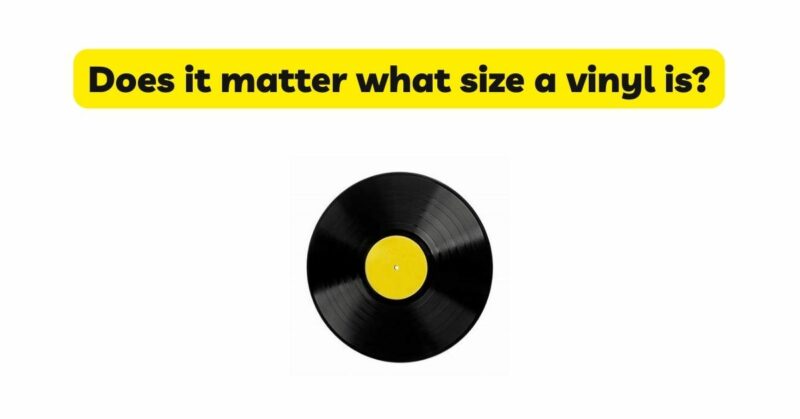In the realm of music consumption, vinyl records have experienced a remarkable resurgence in recent years. Listeners and collectors alike have rekindled their love affair with the warm, analog sound that vinyl offers. As a result, questions arise about the significance of the various vinyl sizes available, specifically the 7-inch, 10-inch, and 12-inch records. Does the size of a vinyl truly matter? In this article, we will delve into the importance of vinyl size and explore how it impacts the listening experience, artwork presentation, and overall record production.
- Sound Quality and the Vinyl Size: The primary consideration when discussing vinyl size is how it affects the sound quality. While the grooves on all sizes of records carry the same audio information, the larger size of 10-inch and 12-inch records allows for wider grooves and greater detail. This translates to enhanced sound fidelity, as wider grooves accommodate more audio information, resulting in improved dynamics and frequency response. However, it is worth noting that the difference in sound quality may not be discernible to casual listeners or those without high-quality audio equipment.
- Artwork and Packaging: One of the undeniable charms of vinyl records lies in their physical presence, including the artwork and packaging. Vinyl sizes play a crucial role in the presentation of album artwork. Larger record sizes allow for more elaborate and visually stunning designs, providing artists with ample space to showcase their creativity. Album covers and liner notes can be more detailed and visually captivating on a larger canvas. Furthermore, the larger sizes also enable the inclusion of additional inserts, lyric sheets, or even bonus materials, enhancing the overall collector’s value.
- Manufacturing Considerations: Vinyl records are physically manufactured using various techniques, and the size of the record affects the manufacturing process. The 7-inch records, also known as singles, are typically pressed with a large center hole, which allows for easier handling and placement on turntables. On the other hand, 10-inch and 12-inch records have smaller center holes and are generally heavier due to their larger size. These manufacturing differences influence the playability and durability of the records, as well as the overall listening experience.
- DJ Culture and Performance: Vinyl records have long been a staple in the world of DJs and turntablists. When it comes to DJing and performing live, the size of the vinyl can make a significant difference. DJs often prefer using 12-inch records, as they provide larger surface area, allowing for more precise mixing, cueing, and scratching. The increased diameter affords more control over the vinyl, resulting in smoother transitions and enhanced creativity during live performances.
- Collectibility and Rarity: Vinyl records have become highly sought after by collectors, with rare and limited edition releases fetching high prices. The size of the record can impact its collectibility and rarity. For instance, 7-inch records are commonly associated with singles and are often released in limited quantities, making them desirable to collectors. On the other hand, 10-inch and 12-inch records are more commonly associated with full-length albums, and special editions or colored variants are often produced to cater to collectors’ demands.
Conclusion: In the ever-evolving landscape of music consumption, vinyl records continue to captivate audiophiles and music enthusiasts alike. While the size of a vinyl may not fundamentally alter the content it carries, it does have implications for sound quality, artwork presentation, manufacturing considerations, DJ performance, and collectibility. Whether you opt for the compact 7-inch, the versatile 10-inch, or the immersive 12-inch records, each size offers its own unique experience and aesthetic appeal. Ultimately, the choice of vinyl size boils down to personal preference, the music genre,and the intended purpose of the record. So, does vinyl size matter? It certainly does, but the significance varies depending on the perspective and preferences of the listener or collector. Embrace the diversity of vinyl sizes and enjoy the multifaceted world of analog music in all its glory.


